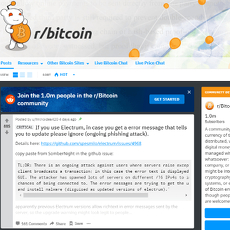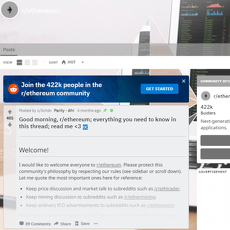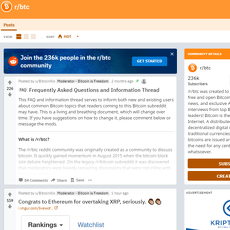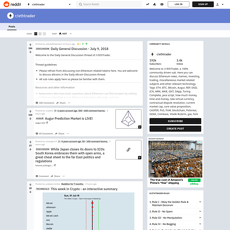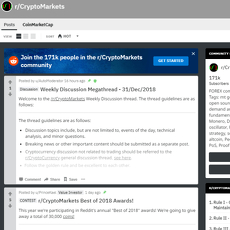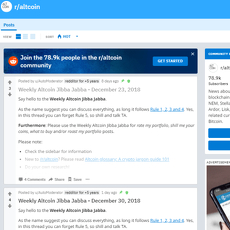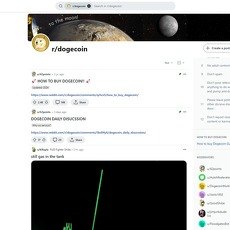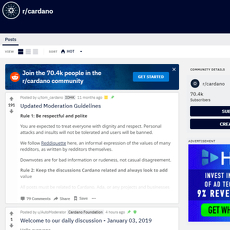r/GolemProject Review
r/GolemProject
www.reddit.com
r/GolemProject Reddit Review Guide: Everything You Need to Know (with FAQ)
Looking for a straight path to GLM updates, earning tips, and real developer info—without wasting hours scrolling through noise?
I’ve gone through r/GolemProject end-to-end so you can jump straight to the useful threads, skip dated advice, and spot official updates fast. This guide is about using the subreddit like a pro—what to read, who to trust, and how to extract value whether you’re a builder, a GPU/CPU provider, or just GLM-curious.
The problem: most crypto subs bury the good stuff
Crypto subreddits are famous for three things: stale info, price spam, and shilling. With Golem, there’s extra confusion layered on top:
- GNT vs GLM migration: People still ask “Is it too late?” or “Which contract is real?”
- Earning mechanics: Providers want clear, current steps: what to install, how to price, whether CPUs/GPUs are actually used, and how payouts flow.
- Where dev updates live: Some updates land on GitHub, some on the blog, some cross-posted to Reddit—and not always in the same flair.
- Old guides vs new tooling: Outdated setup posts still rank in search results, while newer Yagna-based walkthroughs can be harder to find.
“I swapped GNT to GLM but my exchange still shows GNT—did I mess up?”
“Do I need a GPU to earn, or will my CPU do anything?”
“Where are the official release notes for the latest provider update?”
If that sounds familiar, good—you’re in the right place. The challenge isn’t that info doesn’t exist; it’s that the signal hides behind months of posts and repeated questions.
What you’ll get out of this guide
I’ll show you how the subreddit is organized and how to pull value from it quickly:
- Which flairs and filters surface the best posts (and which to ignore)
- How to spot official team content and legit community answers
- Where to find practical earning walkthroughs and provider benchmarks
- Quick answers to recurring GLM questions (migration, wallets, payouts, Golem Cloud perks)
Bottom line: you’ll know exactly how to scan r/GolemProject for the right info in minutes, not hours.
Who this is for
- Builders who want a clean route to dev updates, RFCs, and examples
- GPU/CPU providers testing earnings, pricing, uptime, and hardware choices
- Curious holders who want real progress over speculation
- Newcomers who don’t want to get burned by old posts or fake links
What I looked at (so you don’t have to)
To map the fastest path to quality threads, I reviewed:
- Posting patterns: When useful content tends to appear and how long it stays relevant
- Top/Controversial threads: The classics that answer most first-timer questions—and the debates worth reading
- Mod notes and rules: How spam/scams get handled, and how to identify official links
- Flair usage: Which flairs usually attach to release notes, provider guides, and AMAs
- Recurring FAQs: Migration, wallets, payouts, and “Why is my node idle?”
One quick win from this work: threads tagged as Update or Tutorial and sorted by Top + Month consistently outrank everything else for accuracy and practical value. It’s a simple habit that saves a lot of scrolling.
What you won’t find here
- No price hype, no “number go up,” no sketchy promises
- No blind speculation—only workflows, sources, and patterns that actually help
- No filler. If it won’t help you ship builds or run a better provider, it’s out
If you want a quick snapshot of the subreddit’s purpose, culture, and what to expect before you jump in—ready to see how r/GolemProject actually operates day to day?
r/GolemProject at a glance: purpose, culture, and what to expect
r/GolemProject is the core Reddit home for the Golem Network and GLM community. It’s where you’ll see hands-on tutorials, provider tips from real users, and straight answers about how the network actually works. Expect a practical, engineering-first tone—less “moon” talk, more “here’s my setup and what broke.”
On a typical week, threads range from quick troubleshooting and configuration wins to discussions around new releases, Golem Cloud concepts, and requesters looking for compute. When the team ships something (like a new Yagna release or docs refresh), you usually see a small wave of activity: links to GitHub, notes from devs, and community reactions or benchmarks.
“The best crypto forums feel like workshops, not billboards.”
If that resonates with you, you’ll feel at home here.
Who’s behind it and how moderation works
The subreddit is moderated by a small group of community mods, and you’ll often notice posts or comments from people associated with the Golem team. There are a few easy tells to spot official content:
- Flair cues: Posts marked with something like Team or Announcement usually link out to official sources such as the Golem site, blog, docs, or the GitHub org.
- Moderator indicators: Look for the green mod shield on comments or the “distinguished” style on key threads. It’s a simple way to see when a mod has stepped in with guidance.
- Source consistency: Official announcements tend to include consistent URLs, changelog language, and references to components like yagna, payment driver, golemsp, or requestor SDKs.
I’ve seen the mod team step in quickly when something smells off—especially “support” DMs or links that aren’t from official domains. That keeps the comment sections clean and focused on real issues, not bait.
Allowed content, rules, and how strict it is
This isn’t a shill pit. Posts that stick around usually fall into a few buckets:
- Builds and experiments: “I containerized X on Golem” or “Scaling a microservice with reactive workers.”
- Troubleshooting and guides: “Provider payouts not coming through? Here’s what fixed it,” “GPU/CPU tuning for stable uptime.”
- Updates and ecosystem news: Release notes, SDK improvements, Golem Cloud features, hackathons, and AMAs.
What gets removed? The usual offenders: spam, phishing, fake airdrops, referral links, and price-only threads with no substance. It’s worth reading the rules and using the right flair—it gets you faster replies and keeps your post from vanishing. Report buttons work here; mods act on them.
Posting pace, quality, and signal-to-noise
The pace is steady but not overwhelming. You’ll see bursts around major releases, dev posts, or when someone shares a solid provider benchmark. If you want the highest-value reading without scrolling for ages, I’ve had the best luck with:
- Top of the Week/Month: Surfaces durable how-tos, benchmarks, and thoughtful Q&A that don’t expire in a day.
- Flair-focused browsing: Skim updates and tutorials first, then jump to questions with lots of comments (that’s where the fixes live).
In my scans, the most helpful content clusters around repeatable results—e.g., “30 days as a provider on mid-range GPU,” “requester cost math with real jobs,” or “release X changed my setup; here’s before/after.” Those threads attract power users who ask good follow-ups and share logs or configs. That’s where the signal spikes.
Who benefits most from this subreddit
- Providers (GPU/CPU owners): If you’re trying to earn GLM by sharing compute, you’ll find honest takes on uptime, pricing knobs, job types, and the little gotchas that docs can’t predict.
- Developers and builders: The crowd here speaks “requestor SDK” fluently. Expect pointers to examples, containerization tips, worker patterns (like immortal or reactive on Golem Cloud), and real-world constraints.
- Curious investors and researchers: You won’t get price calls, but you will see product momentum, release cadence, and a sense of where the network is useful today. It’s a cleaner read than chasing hype.
Bottom line: this subreddit behaves like a workshop. People post what they built or broke, and others help tighten the bolts. If you bring specifics—logs, specs, commands—you’ll almost always get better help.
Want the fastest way to cut through the feed and land on the good stuff? What if I showed you the exact filters, flairs, and alerts that make r/GolemProject feel curated instead of chaotic—without living on Reddit all day? Keep reading; I’ll lay out the workflow next.
How to use r/GolemProject like a pro (fast workflows)
I run a simple routine that catches real updates, tutorials, and fixes in minutes—without living on Reddit. Steal my setup below and you’ll cut through noise fast.
“Clarity beats frequency. You don’t need more posts in your feed—you need the right ones.”
Flairs and filters that actually help
Flairs are your best friend. I keep a few high-signal searches bookmarked and run them on auto-pilot. Click, scan, move on.
- Updates (latest official/community progress):
Updates • New • Past Month |
Updates • Top • Year - Tutorials (step-by-step how-tos):
Tutorials • Top • Year - Providers (earnings, setup, troubleshooting):
Providers • Top • Year - Questions (fresh issues worth answering):
Questions • New • Week
Tip: If you prefer the fast, compact layout, use the same links on old.reddit.com—it’s great for rapid scanning.
Search and sort tricks
Reddit’s search is decent; pairing it with Google makes it lethal for finding evergreen threads and fixes.
- Top by time = evergreen gold:
Top • Month |
Top • Year - Google power search: paste into Google:
site:reddit.com/r/GolemProject yagna timeout
site:reddit.com/r/GolemProject GLM migration
site:reddit.com/r/GolemProject GPU OR CUDA pricing - Pinpoint with operators inside Reddit:
- Exact flair: flair_name:"Tutorial"
- Phrase match: "GLM migration"
- Exclude terms (works in most cases): provider -price -moon
- Resurface classics you missed: search + sort by Top + set t=year or t=all to catch foundational guides that still apply.
Why this works: people scan, not read. Nielsen Norman Group found that clear headings and scannable structure lift comprehension and task success—sorting by Top and time boxes you into the most useful content fast.
Notifications and tracking
Get pings for the posts you actually care about so nothing important slips.
- Community notifications: On the sub’s home page, tap the bell and set alerts to your preference. I keep it on “Highlights” to avoid floods.
- Search alerts in-app: Run a search (e.g., yagna, provider, migration) and hit the bell if available. You’ll get notified when new matches appear.
- RSS (rock-solid and fast):
- Whole sub: r/GolemProject RSS
- Keyword feed: Search “yagna” RSS
- IFTTT or Zapier: Set “Reddit search → Email/Slack” for queries like GLM migration, provider, CUDA so your team sees new threads instantly.
- Google Alerts: Create alerts like site:reddit.com/r/GolemProject "Golem Cloud" or site:reddit.com/r/GolemProject benchmark.
Posting etiquette for better replies
Good posts get helped fast. Vague posts linger. A few small tweaks can double your chances of a helpful answer.
- Title formula that works:
[Provider] Ubuntu 22.04 + RTX 3060 • yagna 0.x • “Job stuck at negotiating price”
Clear bracket, environment, version, short symptom. It’s scannable and sets context. - Always include:
- OS + version, CPU/GPU model, RAM, driver versions
- Golem components + versions (yagna, golemsp, Docker if used)
- What you tried already (commands/settings) and what happened
- A short log snippet plus a link to full logs via GitHub Gist or Pastebin
- Pick the right flair: “Question” for help, “Provider” for node/earnings, “Tutorial” for guides. Mods and power users triage by flair first.
- One question per post: Increases the odds someone with the exact experience chimes in quickly.
- Be specific, be polite: Concise posts with environment details get more attention. UX research consistently shows descriptive titles improve response rates because they reduce cognitive load.
Scam spotting and safety basics
Most crypto scams exploit rushed users and fake “support.” Take 10 extra seconds and you’ll avoid 99% of traps.
- Never share private keys or seed phrases. No legit helper will ask—ever.
- Beware “support” DMs: Ask helpers to reply publicly. Scammers love private chats.
- Verify domains: Only trust links pointing to golem.network, docs.golem.network, and the official GitHub org github.com/golemfactory.
- Check token contract before adding anything: The Ethereum GLM contract on Etherscan is here:
0x7DD9…6429. Bookmark it. - Don’t download random binaries: If someone shares a “fix,” verify it against the official releases page on the Golem GitHub and compare checksums.
- Use 2FA and a clean browser profile for wallets. Consider a hardware wallet for funds you don’t actively use.
- Assume urgency = red flag: Chainalysis’ crime reports show scams thrive on time pressure. Slow down and verify.
Gut check litmus test: if a link asks you to connect a wallet to “unlock migration” or “speed up payouts,” close it. Then report the user to mods.
Now that your workflow is set, want to see which post types are consistently worth your attention—dev updates, provider walk-throughs, benchmark threads, and Golem Cloud deep dives? That’s exactly what I’m breaking down next. Which one do you want to master first?
The content that’s actually worth your time on r/GolemProject
If you only have 10 minutes a week, aim it where the signal is strongest. The subreddit has a few repeat winners that consistently deliver real progress, real numbers, and real help. Here’s exactly what to look for—and how to squeeze the most value out of it.
“The fastest way to sort hype from progress is a changelog with code.”
Dev updates, RFCs, and release notes
When you want proof of momentum, follow threads that point to code and docs. You’ll often see titles like “Release: yagna vX.Y.Z”, “RFC: Requester API changes”, or “Update: network improvements”. These posts usually link out to GitHub or the official docs so you can verify what changed and what’s next.
- Where to find them: Look for flairs such as Update or Announcement, and posts that link to github.com/golemfactory and docs.golem.network.
- Why they matter: You’ll catch roadmap hints (e.g., protocol tweaks, pricing changes, new SDK features) straight from source commits and tagged releases.
- How to use them fast: Skim the changelog bullets; click through only on items that affect you—provider stability, payout logic, or APIs if you’re building.
- Tell-tale signs of quality: Links to PRs/issues, version tags, and specific modules (like yagna, SDKs, or task APIs) rather than generic “update soon” language.
If you build or maintain anything on Golem, these threads are your early-warning radar for breaking changes and fresh capabilities.
Provider tutorials and earning walk-throughs
Some of the most useful posts are from community members who actually run providers. They’ll show full setups, config files, common errors, and what finally fixed them. Expect titles like “My first month as a provider (Linux + 3060 Ti)” or “Windows setup: from zero to jobs in 30 minutes”.
- What’s usually included:
- Hardware specs (CPU/GPU/RAM), OS, and driver versions
- yagna install steps and provider config
- Logs and how to read them (jobs accepted vs. rejected, restarts, errors)
- Pricing knobs and what actually moved the needle
- Quick win: Save posts where the author lists exact versions and shares a final “stable” config—those often become your copy-paste foundation.
- Red flags: Screenshots with zero context, “100% passive income” claims, or missing configs. Quality guides show their work.
These threads won’t guarantee earnings, but they will cut your setup time and help you avoid dead ends (wrong drivers, firewall issues, underpowered PSUs, etc.).
Benchmarks, hardware, and cost math
Another sweet spot: users benchmarking CPUs/GPUs and walking through power and pricing assumptions. This is where you can sanity-check if your hardware is worth putting on the network.
- What a solid benchmark post looks like:
- Lists hardware, TDP, and measured watt draw at the wall
- Shares job types observed (e.g., short CPU bursts vs. longer GPU runs)
- Includes uptime and any throttling/thermal notes
- Provides a rough GLM earned over a set period and the number of jobs
- How I sanity-check their math:
- Cross-check GPU power with public specs (e.g., TechPowerUp GPU database)
- Use your local kWh rate from your utility; if you need a reference, the U.S. EIA posts current averages at eia.gov/electricity
- Apply the simple formula: (watts × hours) ÷ 1000 = kWh, then multiply by your electricity price
- Compare CPU-only vs. GPU-enabled sessions; some setups profit better staying CPU-focused if your GPU is inefficient or busy
- Smart takeaway: Look for trends across multiple user posts—consistent power draw or job volume patterns are more reliable than a single screenshot.
Benchmarks are emotional—hardware pride is real—but numbers beat ego. The good posts don’t just brag; they measure.
Golem Cloud and new capabilities
When the subreddit starts buzzing about Golem Cloud, I pay attention. You’ll often see people testing concepts like immortal, reactive, and invincible workers—use-cases that go beyond one-off tasks and into resilient services.
- Immortal workers: Long-running processes that keep state and persist. Think “always-on microservices” living on the network.
- Reactive workers: Respond to events (webhooks/messages) rather than polling—great for alerting, bots, or pipelines that wake on demand.
- Invincible workers: Designed to withstand provider churn; posts sometimes discuss replication or checkpointing strategies that keep services alive even when nodes vanish.
Look for threads sharing code snippets, worker templates, or links to example apps. The ones worth saving describe how they handle retries, state sync, and cost surprises when workloads scale. These conversations hint at how builders will actually use Golem beyond experiments.
AMAs, events, and ecosystem integrations
Every so often the sub hosts or points to AMAs, hackathons, and tooling from the broader ecosystem. These are gold for fast learning because the best questions—and the sharpest answers—happen in public.
- AMAs: Watch for moderator-pinned threads with specific time windows. Good signals include timestamped answers and links to follow-up issues on GitHub.
- Hackathons/workshops: Posts that recap winners, code repos, or tutorials are worth bookmarking; they act like ready-made blueprints for your own builds.
- Integrations: Keep an eye out for posts connecting Golem with container tooling, Python/JS task APIs, or CI/CD examples. The best ones show a minimal repo you can clone and run.
One underrated benefit: you’ll quickly spot which libraries and SDKs the community actually uses—not just what’s officially “available.” That saves you hours of guessing.
Pro tip: When an AMA or event post mentions a roadmap topic (pricing, requestor UX, provider reputation), tag it mentally. Those topics tend to surface again in release notes and RFCs a few weeks later.
Curious how all this translates into actual GLM in your wallet, which wallets people trust, and what the deal is with old GNT? Ready for the no-fuss version that cuts the confusion? Let’s sort that out next.
GLM basics on the sub: migration, wallets, and the money questions
What happened to GNT? The GLM migration
Here’s the short version everyone keeps asking: GNT was swapped to GLM at a 1:1 ratio in late 2020. There’s no deadline, and the total supply converges to 1,000,000,000 GLM. If you still hold old GNT in a self-custody wallet, you can migrate safely using links the community regularly shares from official channels.
Key checks I use before I move a single token:
- Verify the GLM token contract on Etherscan: 0x7DD9c5C…6429 (watch for the blue check, verified source, and ~1B supply).
- Start from official docs and site links, not from DMs or random comments: docs.golem.network and golem.network.
- If your GNT sits on an exchange that never auto-swapped, withdraw to your own wallet first, then use the official migration path the sub usually links.
Sample flow that’s been shared often on the sub: connect wallet → confirm you’re on Ethereum mainnet → approve GNT for migration → swap to GLM → verify new balance in your wallet and on Etherscan. Keep screenshots and tx hashes—future you will thank you.
“Trust is good. Verify is better—especially when one wrong click can cost everything.”
Earning with Golem: what’s realistic
Yes, you can earn GLM by providing compute. No, it’s not a money printer. The subreddit’s most useful threads are honest about the variables: hardware type, uptime, pricing, and—big one—actual demand from requesters.
How it generally works:
- You run a provider (via yagna and runtimes) and set your price for CPU/GPU, storage, and network.
- Requesters send tasks; your node accepts or declines based on your filters and price.
- Payments flow in GLM, often via Polygon for lower fees, using yagna’s micropayment settlement under the hood.
Realistic expectations I’ve seen echoed by power users:
- Demand fluctuates. Hackathons, new integrations, or release weeks can spike jobs; quiet periods happen.
- Uptime matters. Stable, 24/7 nodes get more consistent work than sporadic hobby sessions.
- Pricing is a balancing act. Too high and you’ll sit idle; too low and you may cover energy but not wear-and-tear.
Illustrative example (not a guarantee): a mid-range GPU provider sets a competitive GLM/hour rate, stays online for 7 days, and picks up a series of short jobs during peak community events, netting a modest sum that beats idle hardware but won’t replace a salary. This is closer to “extra yield on spare compute” than full-time income. The best posts on the sub share logs, acceptance ratios, and tweaks that improved fill rates—those are gold.
Wallets, contracts, and basic security
GLM is ERC‑20 on Ethereum and commonly used on Polygon to cut fees. Self-custody is the standard move here, with the community steering folks away from shortcuts.
- Wallet choices: hardware wallets for long-term storage; MetaMask or similar for day-to-day, with a hardware wallet attached when possible.
- Always verify contracts: GLM on Ethereum is 0x7DD9c5C…6429. If you’re on Polygon, add the official token via a trusted source or import it using a reputable block explorer link.
- Watch approvals: before connecting to any app, check token allowances with a tool like revoke.cash and trim excessive approvals.
- Phishing and fake airdrops: the sub regularly warns about “support” DMs and lookalike domains. Type URLs manually or navigate via docs and pinned links.
Quick sanity checks that save headaches:
- When adding GLM to a wallet, use the official contract address—not search results.
- Test with a tiny amount first; confirm receipt on-chain.
- On Polygon, make sure you have a bit of MATIC for gas; on Ethereum, a bit of ETH. Empty gas wallets equal stuck transactions.
Requester costs and provider payouts
Payments flow GLM from requesters to providers, with settlements optimized to avoid wasting gas. In practice, both sides need enough GLM and a small buffer in the native gas token (ETH or MATIC) for smooth operations.
What requesters often factor in:
- Budget per task (GLM): your upper limit for a job.
- Price components (compute, storage, bandwidth) advertised by providers.
- Network choice (Ethereum vs. Polygon): Polygon tends to be the default for lower fees and faster settlements.
What providers watch:
- Minimum acceptable price: set it too high and you’ll get passed over; too low and small jobs won’t justify wear, power, or cooling.
- Payout network: Polygon is popular for its low fees. Confirm your address and payment driver in your yagna config.
- Health checks: stable internet, open ports, and correct runtimes (e.g., VM, wasm) to match what requesters are posting.
Simple, illustrative cost math: if a provider lists 0.02 GLM/min for a given runtime and a requester runs a 30‑minute job, the raw compute line is ~0.6 GLM. Add small extras (I/O, storage, network) plus settlement overhead. On Polygon, settlement friction is usually cents; on Ethereum it can be higher, which is why many users prefer Polygon for day-to-day workloads.
Common gotchas the subreddit flags for newcomers:
- Wrong token/network: holding GLM on Ethereum while your config expects Polygon (or vice versa) leads to failed settlements.
- No gas for fees: requesters need a pinch of ETH/MATIC; providers sometimes forget to top up after a long idle period.
- Overfitting price: copying someone’s “best price” from months ago can backfire; market conditions and demand shift. Start sensible, measure, adjust.
Pro tip: watch threads where users post real job logs and acceptance ratios. Patterns repeat—time zones, job types, and pricing clusters often signal where to set your initial ranges.
Still wondering how all of this ties into the questions people always ask—future outlook, exact steps to earn, and whether the GNT to GLM swap is truly “forever open”? I’m about to tackle those head-on next. What’s the one thing you wish you’d asked the sub sooner?
FAQ: quick answers people keep asking on r/GolemProject
What is the future of Golem crypto?
I see the community treating “future” in two buckets: tech trajectory and price chatter. The second one is mostly noise; the first one is where the sub shines.
- Tech trajectory: Threads often point to release notes, RFCs, and examples showing the network’s shift from classic request/compute jobs toward a more developer-friendly stack (think resilient workers, better tooling, cleaner SDKs). A practical lens I use: follow commits, release cadence, and docs quality. Developer activity tends to be a stronger signal than price. Reports like Electric Capital’s annual developer study consistently show that ecosystems with sustained open-source contributions have better long-run resilience than hype cycles—use that mental model here.
- Price chatter: You’ll sometimes see third-party outlooks or aggregator “2035–2050” tables referenced (Coinbase and others host these long-horizon pages). The sub usually reminds you these are snapshots, not guarantees. Treat them as context, not a plan.
When I skim r/GolemProject, the most useful “future” takes come from builders road-testing features, not from anyone calling the next candle.
How do you earn money with Golem?
Short version: you run a provider (CPU/GPU), accept jobs, and get paid in GLM. Your success depends on reliability, network demand, pricing, and your electricity cost.
- What you’ll find on the sub: step-by-step provider setups, Docker snippets, yagna config tips, port and firewall notes, plus “what actually worked for me” threads. GPU owners share maintenance basics (drivers, thermals, power limits) and CPU folks post low-noise, 24/7 uptime rigs.
- Uptime matters: You’ll notice seasoned providers optimize for consistent online time, stable bandwidth, and predictable latency. That often beats raw horsepower if jobs are bursty.
- Pricing and demand: Look for “provider pricing” or “earnings” posts. People discuss base prices, job mix, and how to avoid underpricing. Jobs can come in waves—don’t judge from a single afternoon.
Simple sanity-check math (example template, not a promise):
- Power draw (W) × hours ÷ 1000 × electricity price ($/kWh) = cost
- Earnings in GLM × GLM/USD = gross revenue
- Gross revenue − cost = rough profit (before wear-and-tear)
Say your rig averages 120 W for 10 hours at $0.12/kWh: 120 × 10 ÷ 1000 × $0.12 = $0.144 electricity cost. If you earned 3.0 GLM and GLM trades at $0.35, that’s $1.05 revenue, ~ $0.91 before other costs. Plug in your real numbers and your GLM price source; jobs vary.
“My RTX mid-tier card needed power limits and better airflow to stop throttling; once I stabilized it, the jobs stopped failing and payouts smoothed out.”
What happened to Golem crypto (GNT to GLM)?
GNT migrated to GLM at a 1:1 rate starting in 2020 and it’s still available—no hard cutoff. On r/GolemProject, the regulars will nudge you toward the official migration page and remind you not to use old GNT tickers on exchanges.
- How folks handle it: verify you actually hold GLM in your wallet, not legacy GNT; double-check contract details via the official docs; and avoid “migration helpers” in DMs—those are usually scams.
- Why this matters: the circulating supply converged to a 1B GLM max, and app tooling expects GLM, not GNT.
What are the benefits of using Golem (including Golem Cloud)?
The sub’s best answers point to real workloads and features, rather than vague slogans.
- Golem Network: distributed compute with pay-as-you-go pricing. You can run batch tasks, rendering, data preprocessing, or experiments without buying new hardware. Builders mention using it for parallelizable jobs and as a flexible overflow lane when local rigs are busy.
- Golem Cloud highlights:
- Immortal workers: jobs that auto-restart if a node dies (great for flaky environments or long tasks).
- Reactive workers: event-driven behavior for bots and services that need to respond to triggers.
- Invincible workers: self-healing patterns that keep services alive across failures.
Practical examples users talk about:
- Running a resilient web scraper that keeps state and resumes if a node goes offline.
- Spinning up a distributed media transcoding pipeline during peak hours, then scaling it down to zero.
- Keeping a small bot/service online with minimal ops—less “babysitting,” more building.
Is this financial advice?
No. r/GolemProject discussions—and this walkthrough—are for research and learning. Always verify links, check official docs, and make your own decisions.
Where do I start if I’m new?
Here’s the 20-minute path I keep recommending because it gets you signal fast:
- Subscribe to r/GolemProject and read the rules so your questions don’t get flagged.
- Sort by Top → Month and open 5–8 threads tagged “Update,” “Provider,” or “Tutorial.”
- Skim one recent provider setup with comments that show solved issues—copy what works.
- Bookmark a working yagna guide and note the version used in the thread; match it in your environment.
- Set a reminder to re-check Top/Month every couple of weeks and keep your node updated.
Quick searches that usually pay off: “provider pricing”, “yagna errors”, “GLM migration”, “Golem Cloud worker”.
One last thing before we move on: want to know if this subreddit is actually worth your time or just another crypto echo chamber? I’ll show you exactly who should subscribe—and who shouldn’t—next.
My verdict: is r/GolemProject worth your time?
Yes. If you care about real progress, working setups, and straight answers, this subreddit is absolutely worth a slot in your weekly workflow. I judge communities by three signals: how quickly you can find the right info, how often real builders answer, and whether threads actually lead to working outcomes. r/GolemProject checks those boxes.
I’ve seen the same pattern repeat: a provider posts logs for a failing job; someone points to the right yagna config flag or a recent change in a release note; the original poster returns with “fixed” and shares a mini how-to for the next person. That’s the good kind of loop. For builders, posts that showcase containerized examples, requestor scripts, or GPU benchmarks often get practical comments (pricing hints, OS quirks, driver versions) instead of armchair talk. That’s rare on crypto subs.
There’s also a compounding effect: once a thread gains traction, you’ll usually see links to official docs or GitHub issues so you can verify what you’re reading. Industry surveys like the Stack Overflow Developer Survey have long shown that community Q&A shortens time-to-solution; project-focused subreddits like this act as the “street-level manual” that lives between docs and production. When your goal is to run a provider reliably or ship a workload, that matters more than hype.
Who should subscribe right now
- Builders exploring distributed compute who want examples, constraints, and real-world feedback before committing to an architecture.
- GPU/CPU owners testing provider income, uptime, and job compatibility—and who value honest answers about demand dynamics.
- Curious holders who prefer verified updates, RFCs, and release notes over price talk.
Sample threads that tend to pay off:
- “Update” posts linking to release notes or RFCs—great for catching breaking changes and new capabilities.
- Provider tutorials with OS specs, yagna versions, and pricing configs—usually include gotchas you won’t find elsewhere.
- Benchmarks comparing consumer GPUs/CPUs for specific workloads, including power draw notes and per-task earnings anecdotes.
- Golem Cloud discussions that explain when “immortal” or “reactive” workers make sense for a given app design.
Quick setup checklist (so you hit signal fast)
- Subscribe to r/GolemProject and skim the rules once—saves you from common posting mistakes.
- Bookmark Top/Month and Top/Year views to surface evergreen guides and classic Q&A.
- Star flairs that matter: Update, Tutorial, Provider, Question.
- Set keyword alerts for terms like “yagna,” “provider,” “GLM,” and “migration” so you don’t miss key threads.
- Note power users who consistently post logs, code, or reproducible steps—those are your go-to comment histories to browse.
- Keep official links handy (docs, GitHub, contract pages) and always verify against those before acting.
Bottom line
r/GolemProject is a time-saver if you want outcomes, not noise. You’ll find real tutorials, sanity-checked answers, and a steady flow of updates that point back to primary sources. Use the filters and the checklist above, and you’ll spend less time searching—and more time building, running providers, or simply staying smart on where GLM fits in the real world.
Shortcut: Subscribe, sort by Top/Month, follow “Update” and “Tutorial” flairs, and verify anything important against official docs. That’s the winning loop.


